About This Project
Bees are essential insects that help to provide us with hundreds of types of fruits, vegetables, and other foods. Despite their importance, human activity threatens bees across the world, especially via changes and losses in habitat. However, we still don't know what the best types of environments are for most wild bees (e.g. natural vs. managed agricultural lands). This project aims to use a novel method examining bee foraging behavior to let bees tell us where they prefer and thrive.
Ask the Scientists
Join The DiscussionWhat is the context of this research?
Bees are essential in the production of over 30% of the economically important crops worldwide. In other words, about 1 in 3 bites of food we take depends on bees! Despite their importance, human activity such as agricultural expansion and intensification threaten bees, especially wild, naturally occurring species (such as bumblebees), that provide pollination to crops free of charge across the US. To counteract declines, scientists are attempting to understand where wild bees are most abundant and likely to provide pollination so that those areas can be conserved. But how these areas contribute to bee success functionally is not yet understood. Without understanding how bees use these environments, we will not be able to develop relevant and meaningful conservation strategies.
What is the significance of this project?
While scientists have a rough idea of what types of areas are best for wild bees, we still do not know the underlying mechanisms driving "bee friendly" areas, nor do we have any empirical data from the perspective of the bee that supports our conclusions thus far. For example, most studies utilize the abundance and diversity of bees to judge how good certain environments are for bees. However, having data from bee behavior itself is akin to interviewing a bee and asking, "What makes a good habitat for you?" Using radio-tracking of bumblebees, we can determine behavioral patterns driven by the environment that we can use as a metric to judge how suitable different habitats are. Combining these data with existing models of bee abundance will provide a more complete picture.
What are the goals of the project?
We have successfully completed a pilot study in 2015, so we know that we can indeed use radio-tagging to track bees and their responses to the landscape they live in.
In 2016, we will first determine if different landscape types in southern Wisconsin (e.g., natural vs. agricultural) differ in what they offer for bee food (flowers). After that, we will measure bumblebee foraging times in these different landscape types to see if foraging time is related to aspects of the bee's environment (e.g. food availability, distance to food).
We predict that diverse environments (those with a mix of natural and human-modified landscapes) will contain the most resources for bees, and that bee foraging times will be the shortest there, since they can easily locate and exploit these resources.
Budget
Tracking small organisms with radio tags is still a relatively new endeavor - as such, the technology can be expensive as so few companies provide it. However, being able to track individual bees as they enter and leave their nest across multiple locations simultaneously greatly increase our data collection capacity, as well as the ability to uncover patterns in bee behavior that relate to the quality of bee habitats. Our current tracking equipment is limited to only a handful of sites, and must be moved frequently at the expense of understanding colonies behavior throughout the summer. The additional funding that we have allows us to purchase research colonies of bumblebees, but doesn't allow us to expand our radio-tagging to the levels we need to rigorously test certain hypotheses.
This funding would allow us to expand our tracking across additional sites and give us a more holistic glimpse into what drives bee foraging behavior and colony success.
Endorsed by
Meet the Team
Team Bio
This project is centered developing more sustainable agricultural systems with regard to beneficial insects, specifically pollinators. I work in close association with a variety of farms in Wisconsin, especially cranberry growers, with the overall goal of understanding where wild bees are likely to occur, and how we can alter our environments to support more bees and the services they provide to our agricultural crops across Wisconsin.
Jeremy Hemberger
My connection to nature was fostered at a young age. Hunting, fishing, and exploring the natural areas of Wisconsin have instilled a true fascination and respect for the world that supports us as humans.
The studies I pursue reflect my fascination and concern with the natural world. As an entomologist, I marvel at the beauty, complexity, and diversity of the insect world and all that it provides for us. As an ecologist, I seek to understand the inter-connectedness of organisms and their environment and how their environment may affect their behavior, especially with regard to any ecosystem services (benefits nature provides to humans) that they provide. As a conservationist, I aim to protect lands and living things that are essential to the persistence of both human and natural worlds.
I am a lifelong Wisconsin resident. The influence of those like Leopold have fed my desire to have a positive impact on our state, and the activities it is renowned for. As such, I aim to use my passions for ecology, entomology, and conservation to help to develop more sustainable agricultural systems with regard to beneficial insects and the vital services that they provide.
Additional Information
Stories about this research:
- “Buzzworthy Research” – OnWisconsin Magazine
- Lakes Lessons Features “Native Pollinators in Wisconsin Agriculture” – Door County Pulse
- “Monitoring bees with microchips” – NBC 15 News – August 12, 2015
- Science on Tap, Minocqua WI. – September 2, 2015
- “Tagging bees to help support pollinators” – Larry Meiller Show – March 18, 2015
- “Bee Happy: UW Researchers Improve Pollinator Habitat” – Milwaukee Journal Sentinel
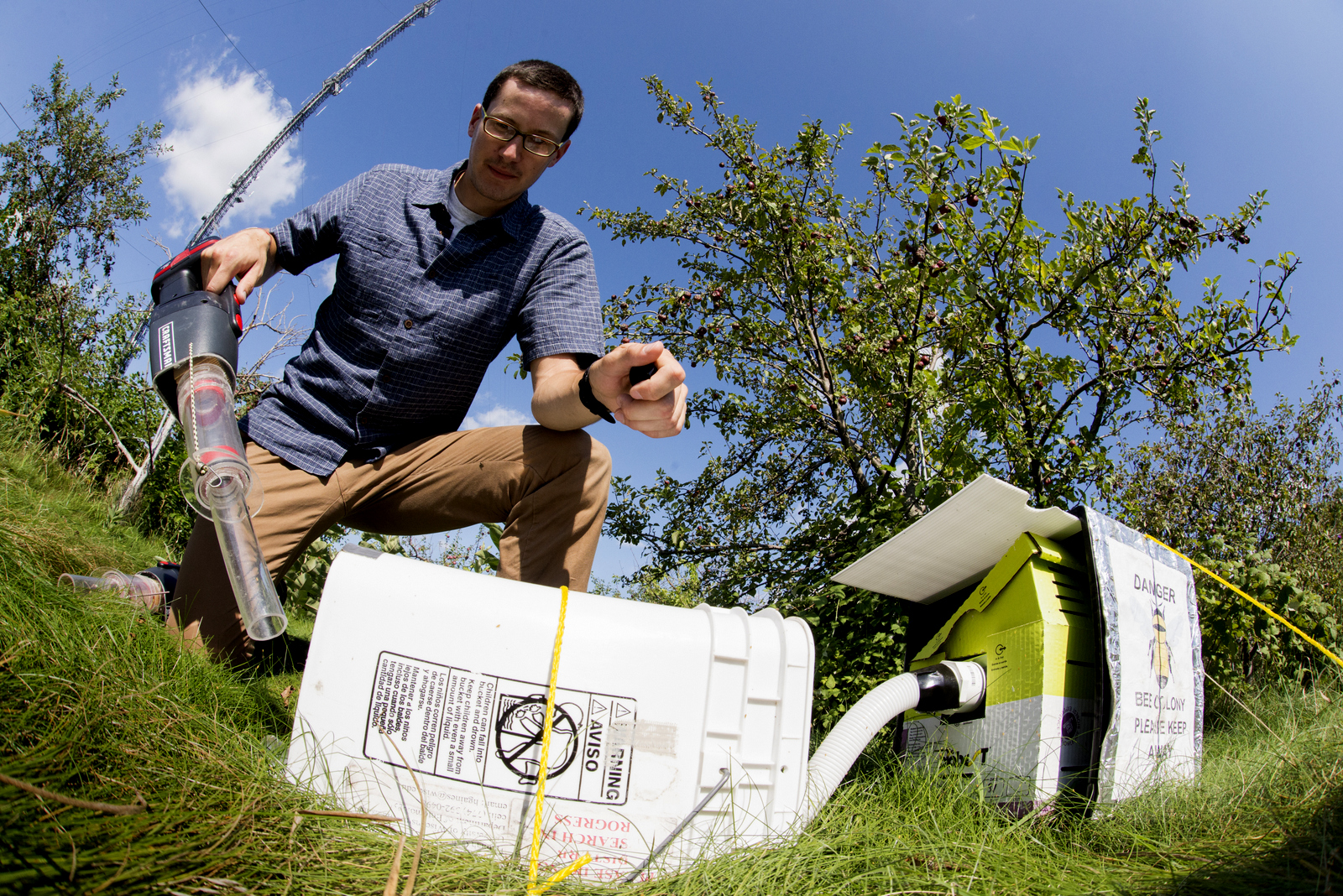 Awaiting foraging bees to return to their nest. Once returned, we quickly collect them for tagging. (Photo: Clay Bolt)
Awaiting foraging bees to return to their nest. Once returned, we quickly collect them for tagging. (Photo: Clay Bolt)
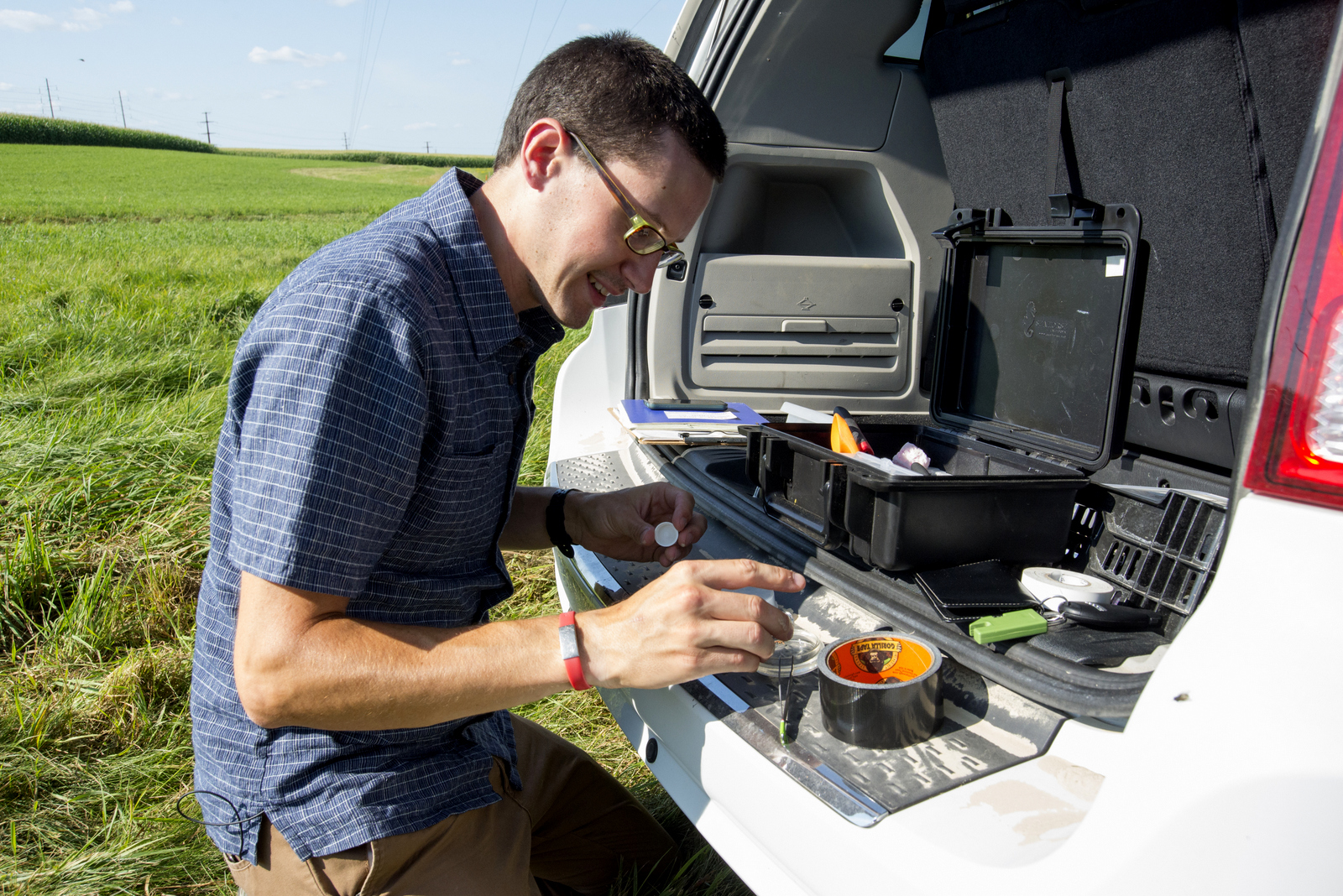 Affixing a radio frequency identification (RFID) tag to a bumblebee on the "tailgate lab." (Photo: Clay Bolt)
Affixing a radio frequency identification (RFID) tag to a bumblebee on the "tailgate lab." (Photo: Clay Bolt)
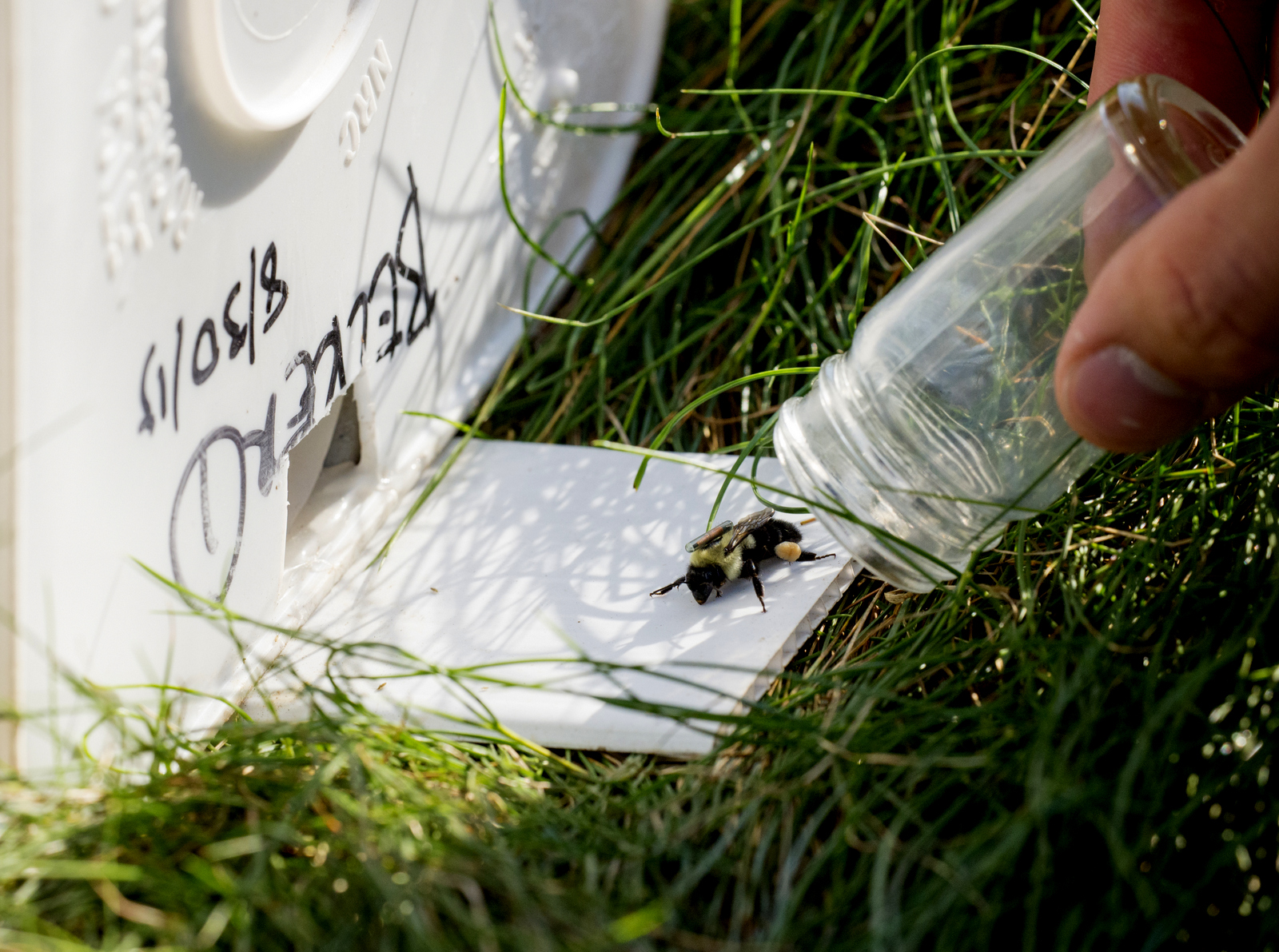 Releasing a tagged bee to the nest. (Photo: Clay Bolt)
Releasing a tagged bee to the nest. (Photo: Clay Bolt)
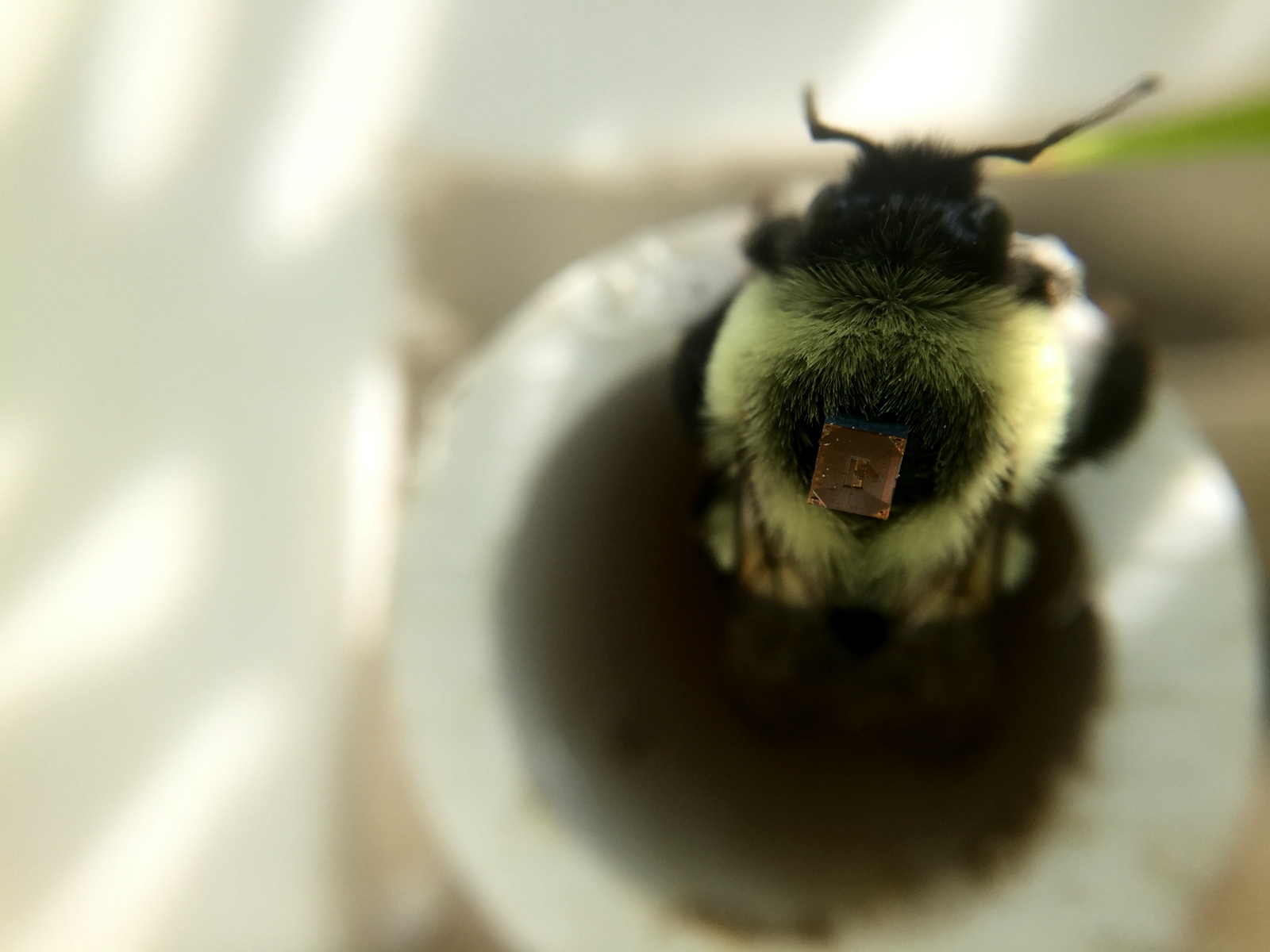 A tagged bumblebee exists its nest to go and gather pollen and nectar (a process called foraging).
A tagged bumblebee exists its nest to go and gather pollen and nectar (a process called foraging).
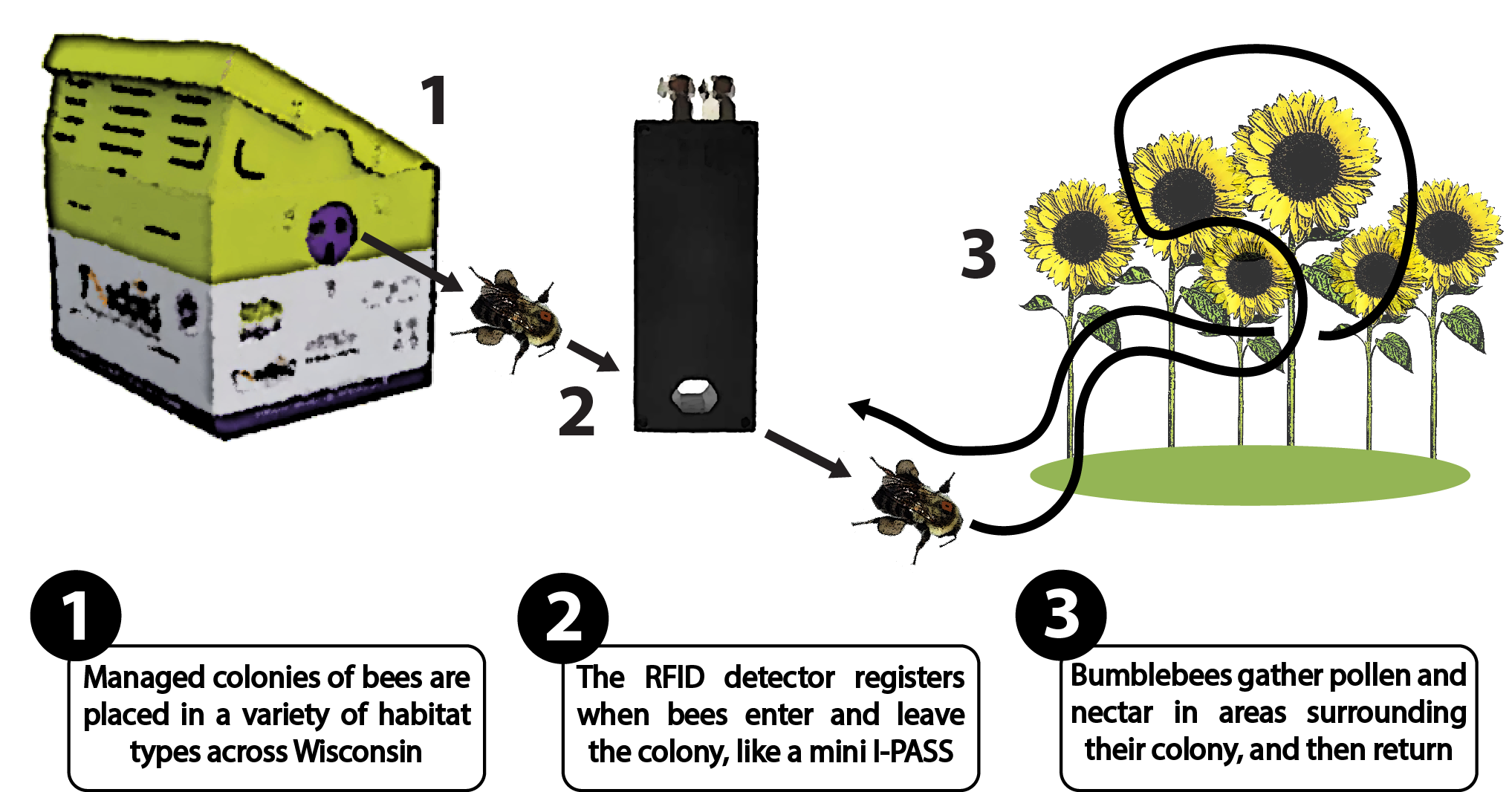
Concept diagram of the RFID experiment.
Project Backers
- 43Backers
- 108%Funded
- $3,245Total Donations
- $75.47Average Donation


